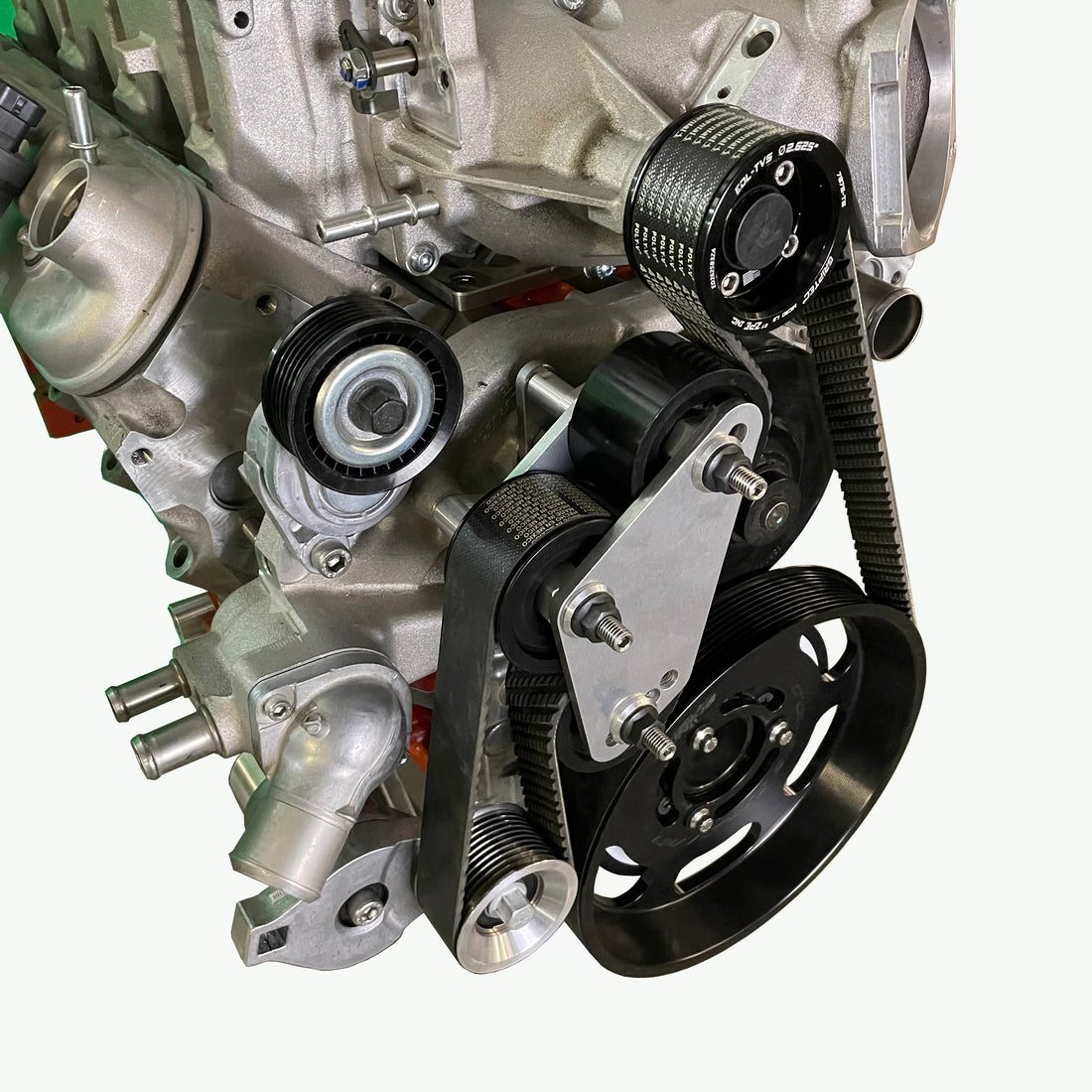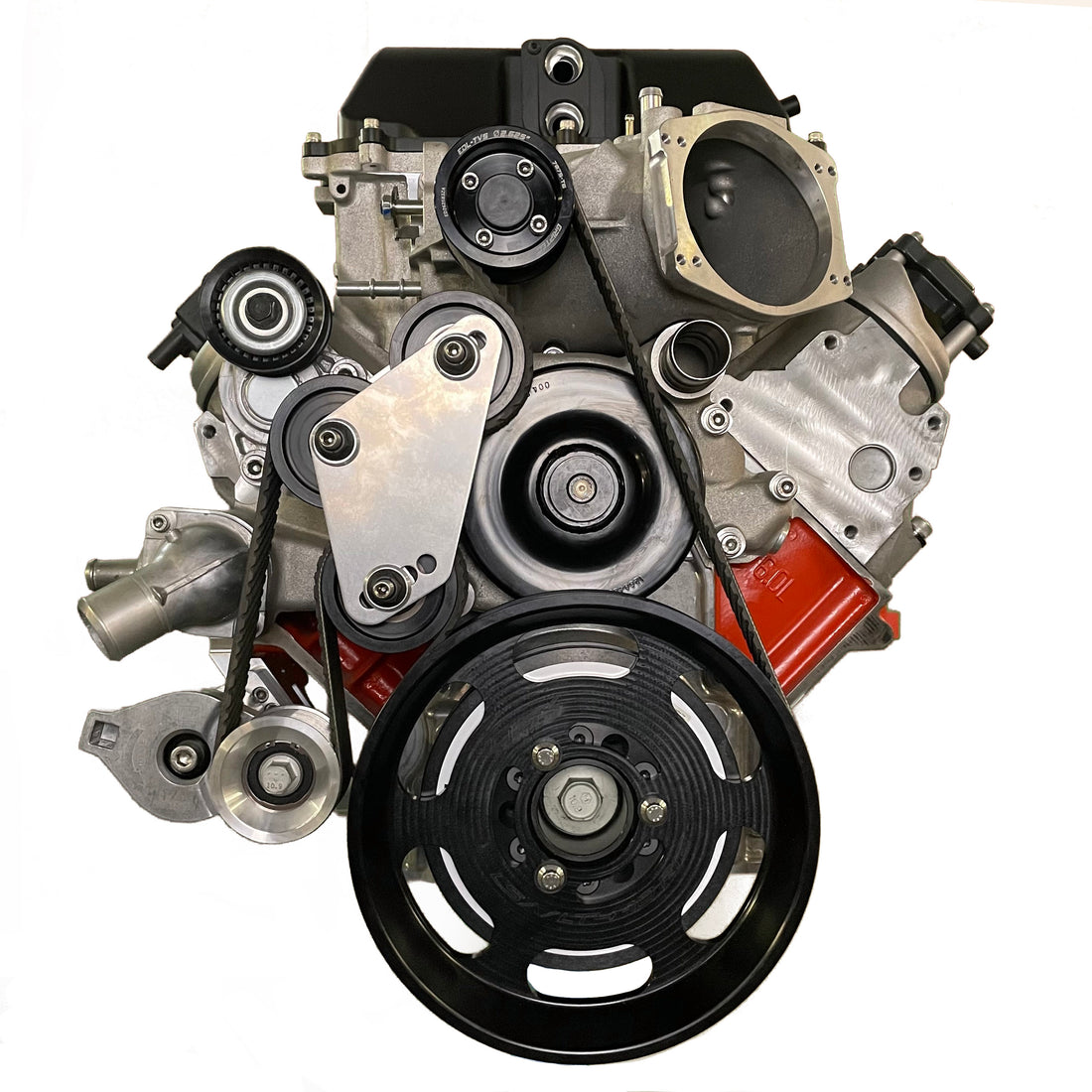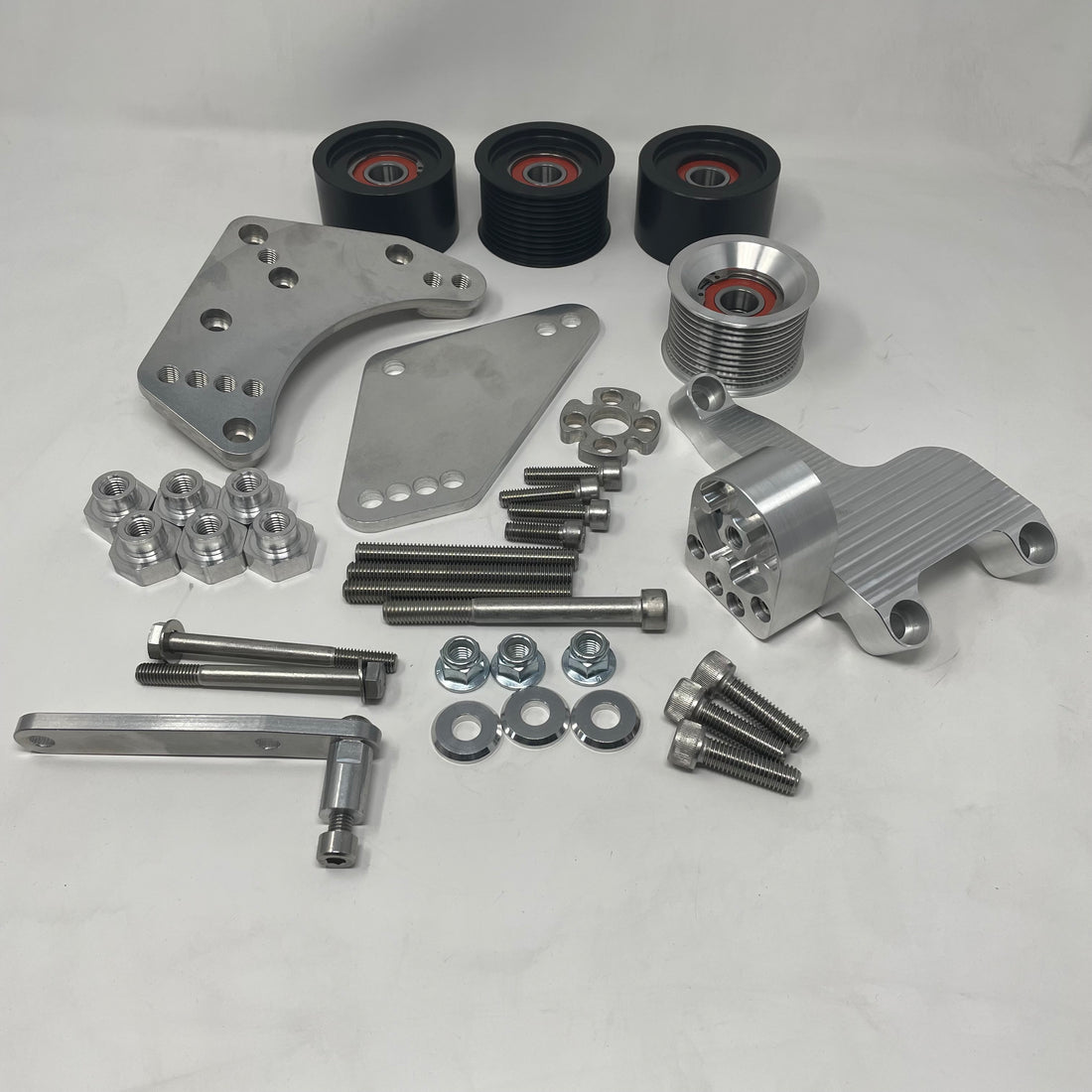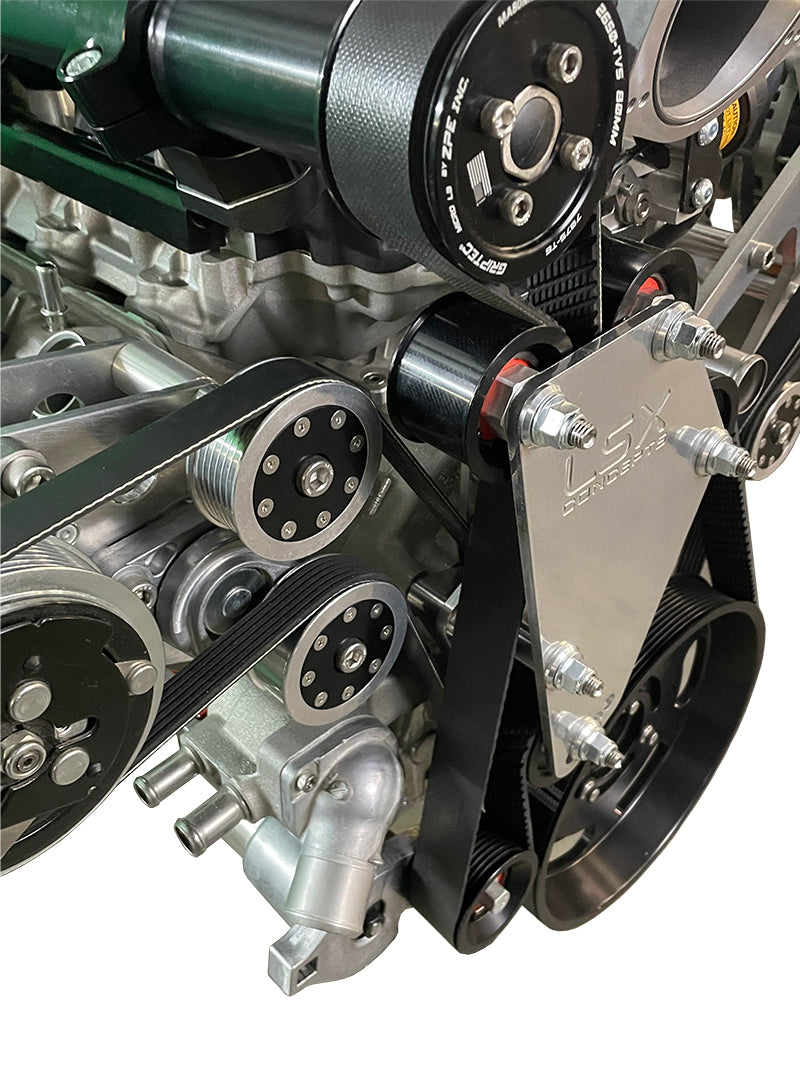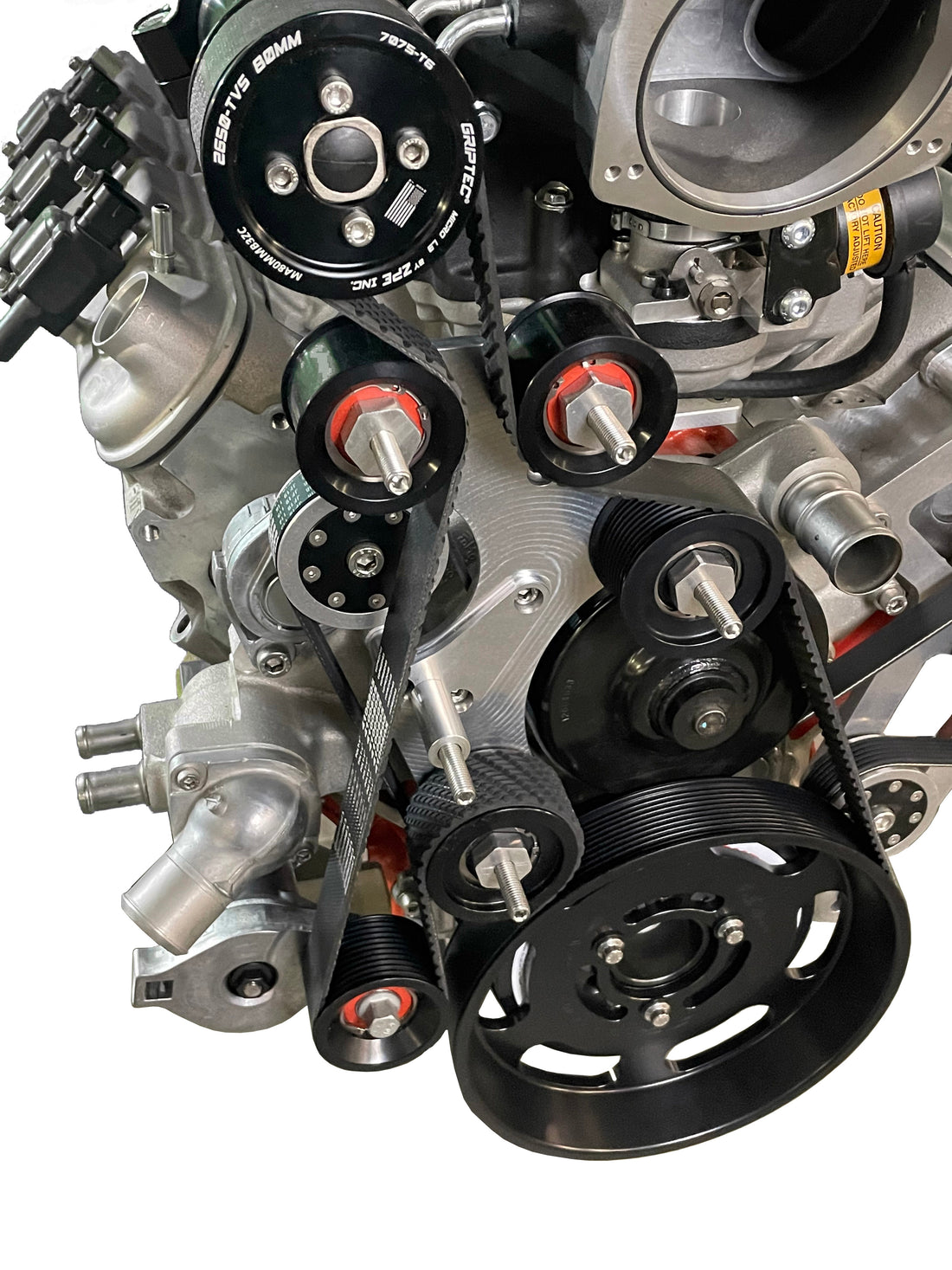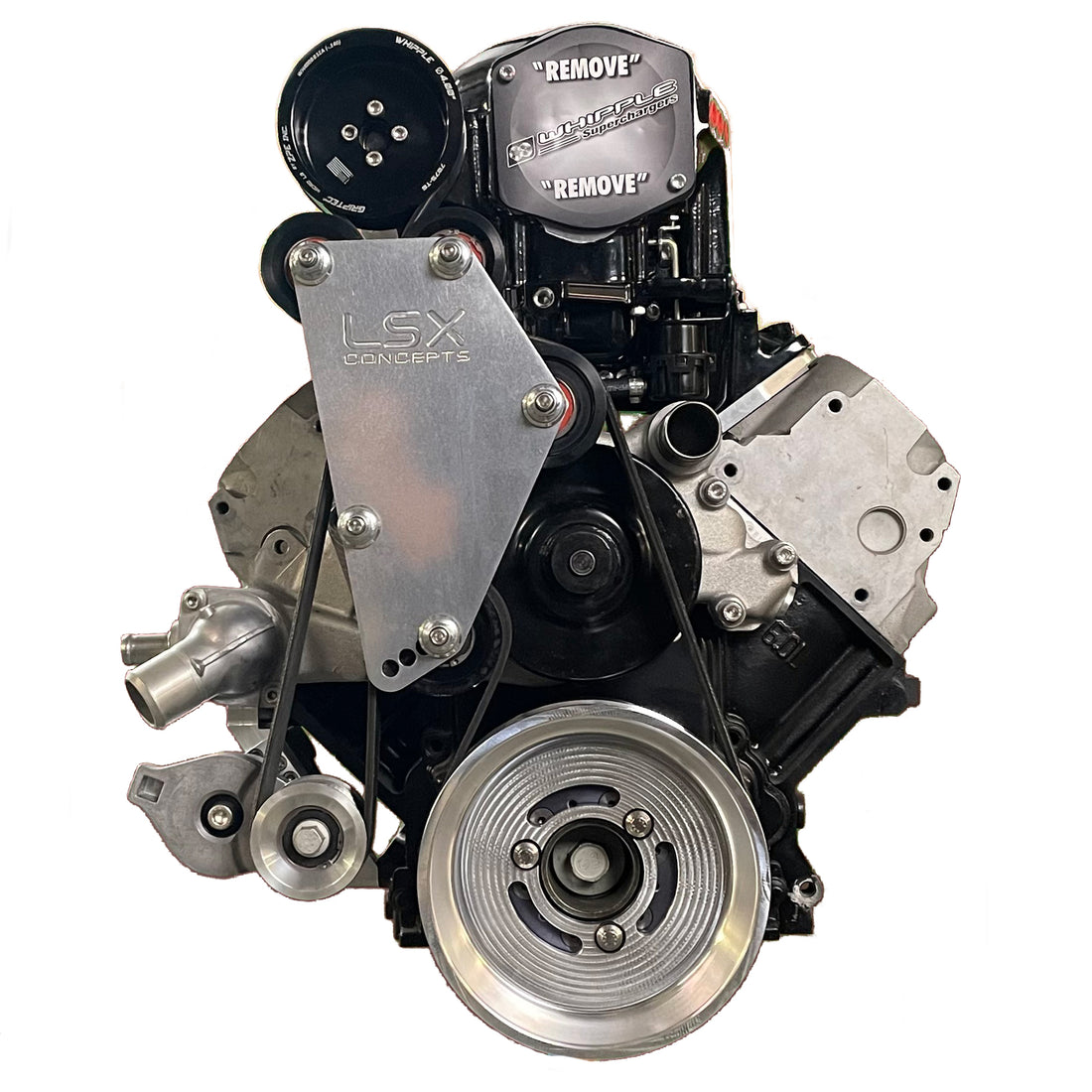LSX Concepts LS Swap Blog
ZL1/CTS-V LSA superchargers Calculating Boost on your ZL1 / LSA swap
ZL1/CTS-V LSA superchargers Calculating Boost on your ZL1 / LSA swap
So it seems the ZL1/CTS-V LSA superchargers are the hot swap these days, they are all over eBay for as little as 500.00 and one of the primary reasons we developed our LSA Supercharger Accessory Drive kit. It's like the 60's again when we had all the 6-71 and 8-71 blowers laying around for your hot rods. Note: GM called their Diesel 2 cycle supercharger for the numbers of cylinders and the cubic inch of each, hence 6-71 and so on. Now we have the ZL1/CTS-V LSA superchargers just begging to be on your LS swap in your muscle car.
I see lots of people talking about ZL1/CTS-V LSA superchargers on the forums, but I see a lot of people are still mystified by how they work. Many think they can put it on their big inch LS build and it will make 9lbs of boost. I will try to let a little bit of the magic out of the bag today, calculating boost from a constant displacement supercharger like the LSA Supercharger on a constant displacement engine.
One of the first things you need to realize is that the LSA supercharger and engine are both constant displacement pumps designed to work together and produce 9lbs of boost, so as you change one constant value greater the other is affected proportionately lower.
ZL1/CTS-V LSA superchargers - Boost Math:
The ZL1/CTS-V LSA superchargers installed on a factory 376 cubic inch LS is rated at 9lbs of boost. The 9lbs of boost is achieved using a 7.8" crank pulley and a 2.95" blower pulley. That gives the LSA Supercharged Engine a 2.6 pulley ratio on the supercharger. In other words the top pulley goes 2.6 revolutions for every revolution on the bottom.
Pulley Ratio Math:
Therefore: 7.8 / 2.95 = 2.644
(crank pulley OD / blower pulley OD = pulley ratio)
Now for this example we are going to calculate how much boost we make if we put this ZL1/CTS-V LSA superchargers on a 427 cubic inch LS engine. It's a 2 step process. The first thing we need to do is figure out how much bigger the 427 cubic inch LS engine is in comparison to the stock 376 cubic inch engine. The second calculation is to adjust the boost down proportionally.
Pulley Math:
Remember, we have the same amount of air on top but a bigger hole to fill on the bottom lowering the pressure.
427/376=1.135638 Lets round it to 1.136 Save the number for the second calculation.
For Discussion: Percentage is like talking dollar and pennies and where we put the decimal point. 1 dollar is 100 pennies with the pennies being like percentages. Just move the decimal point 2 positions to the right for percentage.
So now 1 or 100%=376 is for the base engine and .136 or13.6%=51.136 for the increase size. So the 427 is 13.56% bigger than the stock 376 cubic inch ZL1.
Boost Ratio Math:
Simply divide the original boost by the overall increase in engine size.
Therefore: 9/1.136 = 7.92 boost.
So, our 427 will make 7.92lbs of boost with the stock pulleys.
To Increasing Boost :
So how do we make more boost? Easy, change the pulley sizes and spin the LSA Supercharger faster. To do this we need to calculate a new pulley ratio with some know pulley sizes. The engine is 13.56% larger therefore a 10% larger crank pulley would get back most of the boost. For example, theATI 10% Overdrive pulley (for the stock ZL1) is 8.58 inches. That should get us back closer to the original 9lbs of boost.
Pulley Ratio Math:
8.58 / 2.95 = 2.908 (crank pulley dia. / blower pulley dia. = pulley ratio)
Now we can calculate boost with the new pulley ratio
Therefore: 7.92/2.6 x 2.908 = 8.85lbs boost
(current boost/current pulley ratio x new pulley ratio = new boost value)

